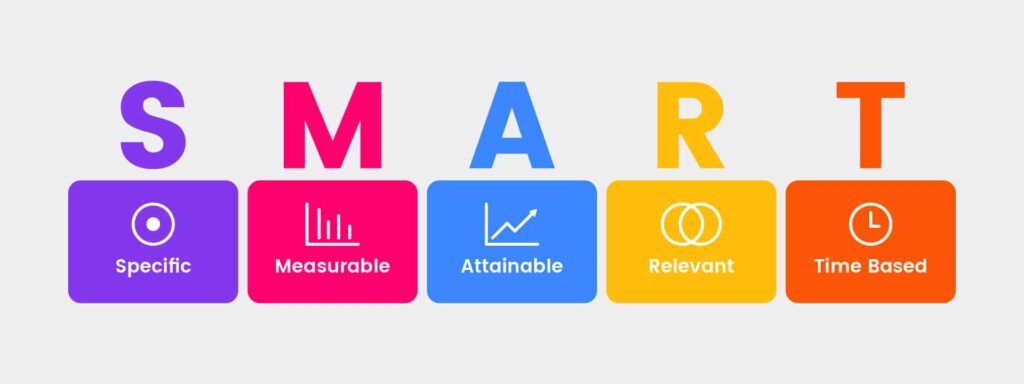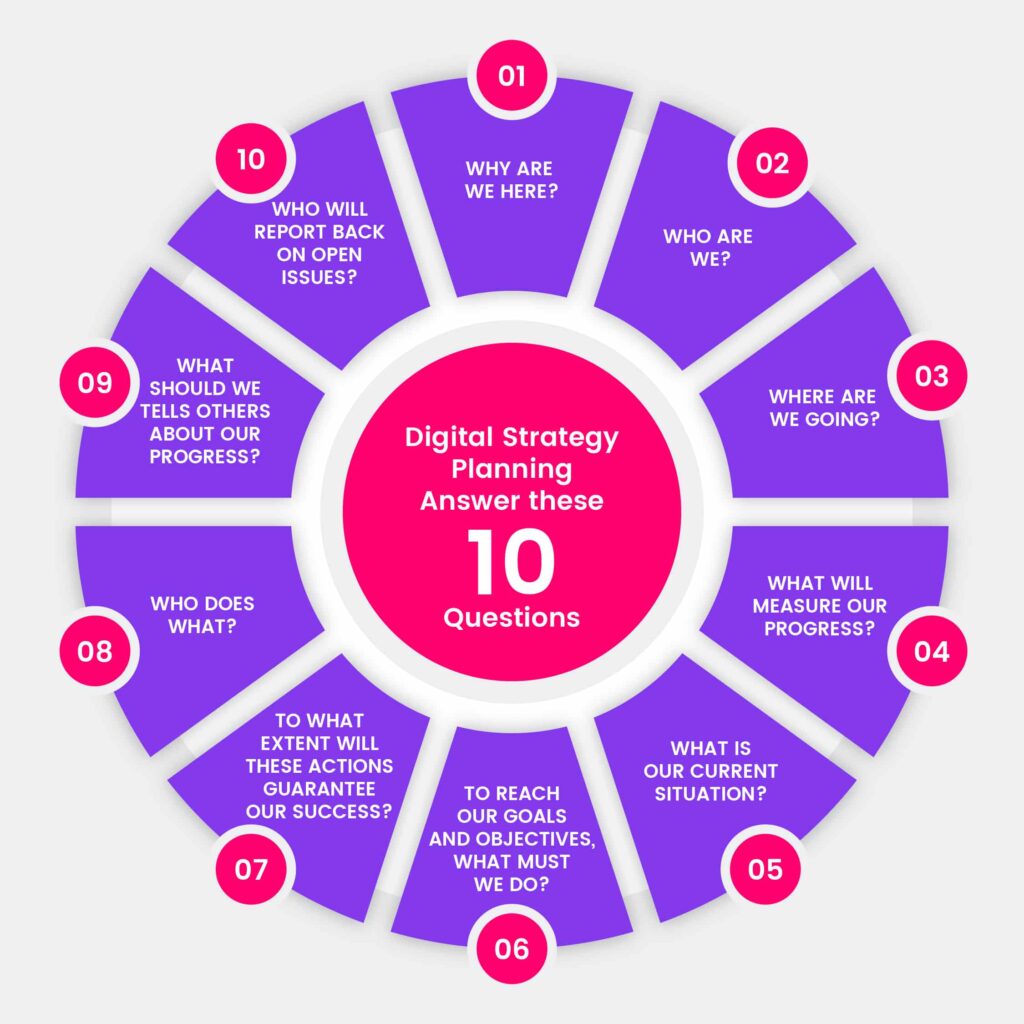Shaping your organisation’s Digital Vision and Strategy – Developing goals and setting measurable actions
Shaping Your Organisation Digital Strategy - Developing goals and setting measurable actions

In our last blog ‘ How to shape your organisation’s digital vision and strategy’ we focused on what is a digital strategy? How to set clear vision and most of all identifying key questions to discuss with your staff and stakeholders to empower them with owning the strategy.
Turning your vision into goals
Once you have a clear vision of your institution’s digital strategy, and it has been agreed you need to identify the strategic goals that are needed for achieving the vision. Today’s blog will focus on developing goals and setting measurable actions to achieve your vision.
I must state the importance of selecting strategic goals that have been arrived at through the consultation process with all stakeholders, analysis of trends and influential signals within the education sector that shape the present and can inform the future.
By understanding this influence, it will help you to:
- Identify where capability needs to be developed and your existing strengths
- Where additional resources are needed and where assets need to be rebalanced
- Identify where key decisions such as financial need to be made before key commitments.
- Inform how to plan, implement, and monitor your strategic goals, but most of all implement the appropriate feedback channel on how you are achieving your goals.
What you can do
Working in education I am sure you have come across the SMART acronym for goal setting any objective needs to be: Specific, Measurable, Achievable, Realistic and Timely.

Specific: It makes sense that the more detailed and focused your objective is, the easier it will be to achieve. Who, what, where, when, and which are all questions you should be asking to create tightly defined objectives.
Measurable: You need to know what success looks like and how to measure it. The good news is that there are plenty of strategies currently in your institution on how to measure objectives, talk to different departments such as quality, HR etc.
Achievable: If there are too many hurdles or practicalities that stand in the way of achieving your objective, then you have a problem. You must be realistic. For example, you might not have the budget to purchase twenty VR (Virtual Reality) headsets or to provide all students/staff with a 1:1 device.
Relevant: Your objective naturally must have a strong relation to your institution goals/mission/values.
Time Bound: You also need to have a realistic timeline. Here you need to consider if the initiative/approach is going to work in one week, a month, a year? The quicker you can achieve the results you want, the better.
External analysis
The education sector and your organisation are continually adapting to changes in the political, economic and social arena. These shifts shape the way day to today education is delivered, such as preparing staff and students to be better digital citizens by developing their digital skills and digital awareness to an increasingly digitised society.
Consider what you are trying to achieve and what consideration would you need to consider in terms of Cyber security, GDPR (General Data Protection Regulation) etc.
To help you identify how political, economic and social changes can influence strategic decisions, the following well-known strategic tools could help.
A PESTLE analysis is a tool that can provide prompts to governors, management and staff involved in the analysis of the changes in the institution’s environment that could impact future finance, planning and management decisions.
A PESTLE Template:
| Area being reviewed | Factor: | Is the factor positive or negative? |
|---|---|---|
| Political | E.g. Changes to the skills required to be a teacher/ tutor Changes to curriculum with short lead times | P – N P – N |
| Economic | Central or local government funding decisions may affect school/ establishment finances Cost of providing resources: Staff – teaching & support Basics – books/ paper Technology solutions laptops etc. | P – N P – N |
| Social | Closure of local firms providing employment The risk of highly valued, key staff moving on to more up-and-coming establishments | P – N P – N |
| Technological | Changes to standards/ equipment required Move from paper-based books to e-books | P – N P – N |
| Legislative | new legislation may create risks of non-compliance with the law, create new administrative burdens etc Health & safety legislation | P – N P – N |
| Environmental | Using a significant amount of paper and photocopier toner to produce printed information | P – N |
Remember this is only a tool. Call it what you like – use whatever factors you feel are appropriate.
Internal analysis
You will need to consider if you have staff with the right skills and are they adoptable for adopting and delivering the goals. As stated in the previous blog, your institution has a wealth of internal digital talents and valuable digital expertise which can be leveraged to create innovation.
Two of the most popular and easy to use strategic analysis tools used for analysing staff potential are:
- A strengths, weakness, opportunities and threats (SWOT) analysis – this can quickly identify where your organisation has the capability to respond to challenges and adapt to changing circumstances
- Strengths, opportunities, aspirations and results (SOAR) analysis
– this is a strategy formulation and planning framework that allows an organisation to plan its most preferred future.
Shared Ownership and Accountability
To ensure your digital strategy is a success, you need to transfer ownership and accountability to key managers and stakeholders within the organisation. For each strategic objective assignment consider “WHO does WHAT by WHEN” and the following 10 questions.

All objectives must focus on the desired measurable effects, rather than the steps that will be taken. Make it clear to strategic objective owners that they are responsible for executing the implementation, monitoring and achieving the strategic action.
Consider using the following headings when designing your strategic objectives
- Action
- Who is responsible
- Tools and techniques
- Due Date
Finally, it’s important to remember achieving your digital strategy vision is not a solo person task (no digital leader is an island) you will require the ongoing support of colleagues and fellow senior leaders to help your organisation to become and remain more competitive in an increasingly digital world.
Our final blog in the series of ‘How to shape your digital strategy’ will focus on communicating and monitoring progress of your strategy.


